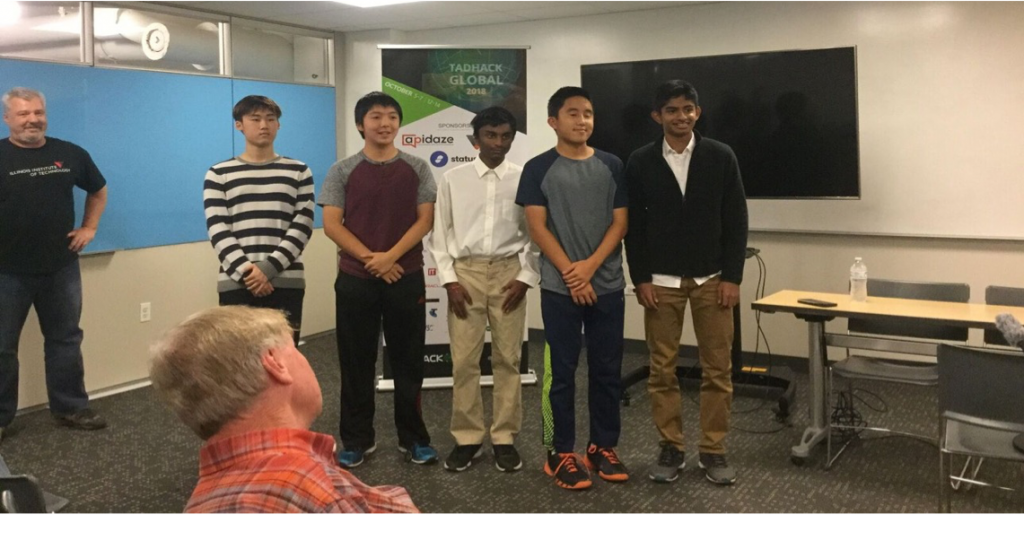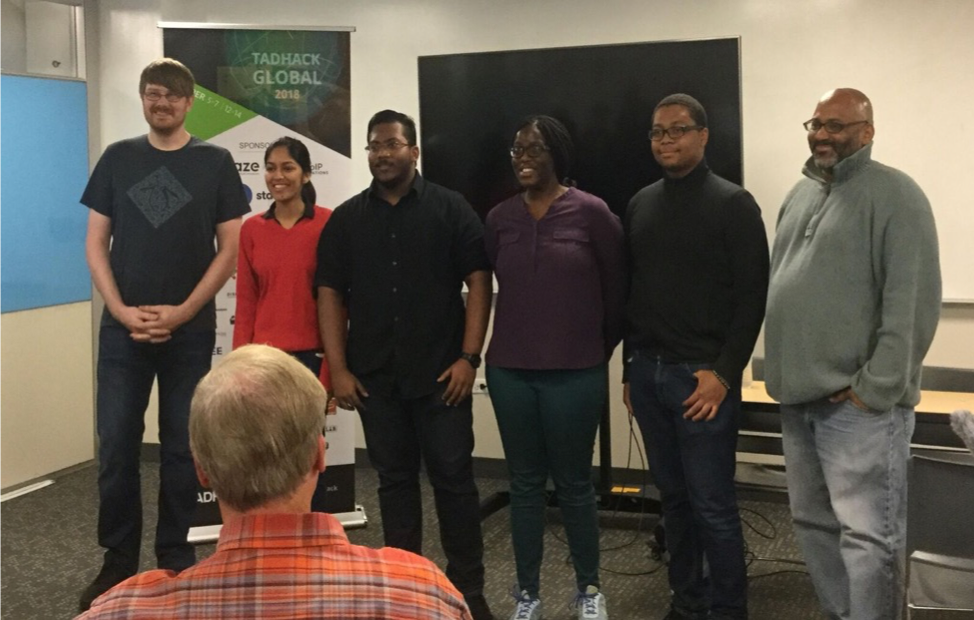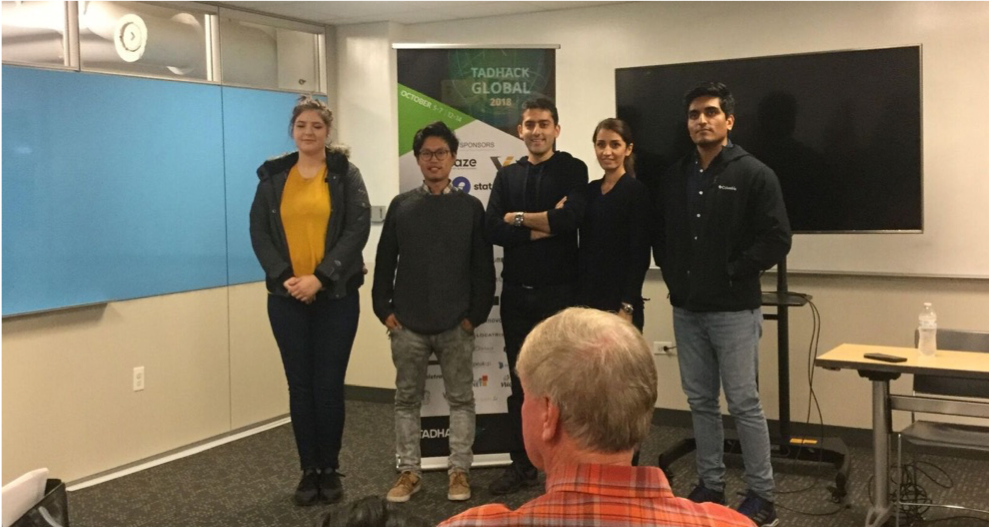On Wednesday 17th Oct I gave a keynote at the IIT RTC Conference covering Programmable Telecoms Evolution along with the 3 winners from TADHack Chicago.
The slides from the session are shown below, and you can see the keynote video here. This link is the live stream, so you’ll have to hunt through it. Just look for a scruffy white-haired / bearded guy ranting about something. I’ll update when the edited video becomes available.
My part of the keynote was divided into 2 sections: an explanation of what Programmable Telecoms is, and a review of TADHack Global.
First by listing lots of examples of Programable Telecoms: CPaaS, UCaaS, CCaaS, open source telecom software, CPaaS enablers, Multi-Factor Authentication / Instant Authentication, Telecom APIs, WebRTC, Cloud Communications, CPaaS enabled services, omnichannel, telecom infrastructure as code, telecom service dashboards, the myriad of UIs making APIs and enablers and services useable beyond coders. Through this definition I explained the trend in the democratization of telecoms.
I then gave an architectural definition to break down the main functional components, see below. I could have added many more components within the services layer, e.g. workflow. The bias of this diagram is really on the more network / transport related parts. The base layer of the diagram explains the aggregation and firewall functions. Above that sits the application server functions, the abstraction of all those funky network protocols and APIs, and provide lots of common functions, e.g. call redirection. Then there’s a layer of value added services, and above that enablers and services. Its really more a gradual abstraction from send an SMS, through record the call and basic UC functions, to an off the shelf UC service.
The KISS definition was, “If its Telecom related, and its programmable / configurable its Programmable Telecoms.” Suggested reading is “The Potted history of Programmable Telecoms” and don’t forget to check out the Irreverent Acronyms at the end of the weblog.
So Programmable Telecoms exists, its getting democratized so many more people can use it. And its likely greater than $100B in 2021 as we look across all these markets:
- CPaaS (voice and messaging) $8B by 2021, 57% CAGR
- UCaaS estimate $33B by 2021 CAGR 11%
- SIP Trunking US $5.5B (2021), Global $11B, CAGR 14%
- CCaaS estimate $18B (2021) CAGR 25%
- A2P SMS Market estimates vary greatly from $12B to $60B with CAGR -10% to 40%. CPaaS estimates do not include legacy SMPP deals. We’re taking the lower estimate of $12B, and this may be high.
- GLobal Mobile Authentication (MFA) $11B, 18% CAGR
- Mobile Marketing, IoT, enterprise telecoms, collaboration, charging payments and wallets, and many more.
The legacy enterprise telecoms guys will claim, most of that revenue is mine, which is true, but they’re also offering UCaaS / CCaaS, as well as attempting to maintain legacy revenues / pricing / margin.
An interesting point made was, “but Cisco will just swat these flies away.” But the flies come back, Webex then Zoom is a great example. The cadence of the market is changing so the ‘break’ from the flies to entrench oligopolies is disappearing. We’re seeing cracks in the assumed oligopoly of enterprise telecoms supply. Whether its SIP trunking from cloud providers replacing legacy TDM circuits from telcos. Or RingCentral’s rise / valuation. Or simply the consumerization of enterprise telecoms. “That which always has been, increasingly no longer is in enterprise telecoms”. Call it disruption if you like, its finally happening.
I then moved onto a review of TADHack, to set some context for the 3 pitches of the TADHack Chicago winners.
TADHack is a series of hackathons that help people learn about the latest Internet, IT, and Telecoms technologies; and use those technologies to solve problems that matter to them in their communities, work or home life. The T in TADHack is for Technology.
TADHack is the largest global hackathon over one weekend:
- 4000+ registrations
- 20-30 locations around the world running in parallel
- Global and local attention.
- Founded in 2014.
A fundamental principle of TADHack is Diversity: TADHack is for everyone! We welcome students, graphic designers, web developers, project managers, product managers, IT Managers, all types of coders, interested individuals, subject-matter-expert, even telecom geeks.
I’m in the process of gathering up all the achievements of TADHack over the years. After 5 years we really should reflect on everything we’ve achieved in the project.
Now onto the winning hacks from Chicago:
Hack Sysafe by Pavan Pandurangi, Ryan Zheng, Jihoon Park, Vishal Chandrasekaran, and Edward Zhang. Safety/emergency comms app for parents to monitor children
Runner Up $250
Hack Panda Guard by Terrence Johnson, Brandon Brown, Saumya Gupta, Ogechi Ike, Patrick Kijek, Antonine Foggs, and Poshak Gurumoorthy
Ensures safety and security inside a building by authorizing admittance, and keeping track of occupant position.
Winner $500
Hack OMANA Emergnecy Alert by Aleksandra kukeilko, Nastaran Ghane, Abhijeet Ambekar, junfeng wang, and Milad Sabouri
Multiple solutions for alerting contacts in emergency situation
Runner Up $250
A big thank you to Tom Costello for all the ‘back of the head shots’, and much much more 🙂 Especially Warren Bent for all his hard work in making TADHack Chicago happen since the beginning. And Professor Carol Davids, for her support 🙂
Please check out TADSummit 13-14 Nov in Lisbon and online. Its the leading event in #ProgrammableTelecoms. I summarized TADSummit today as Education not Indoctrination. You’ll not see silliness like ‘API economy’ (an API is just a HTTP request, its the whole service not the API that matters) or Digital Transformation (Digital was cool in the ’70s, and business is constantly evolving else it dies). You’ll get solid experience-based insights from many #ProgrammableTelecom leaders, #noBS.




